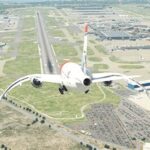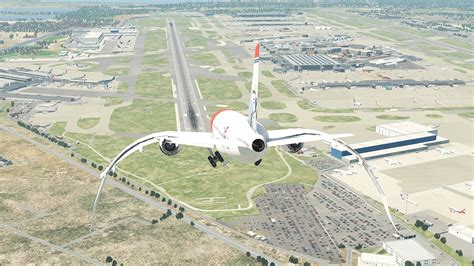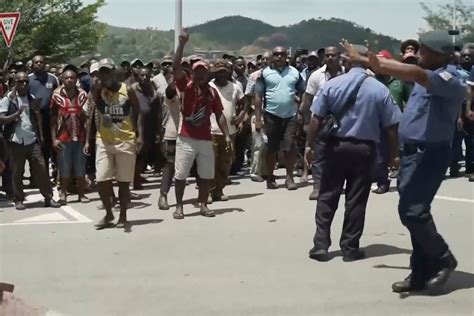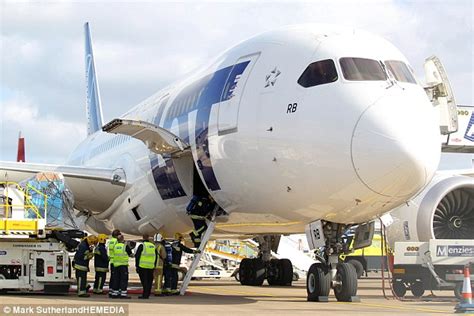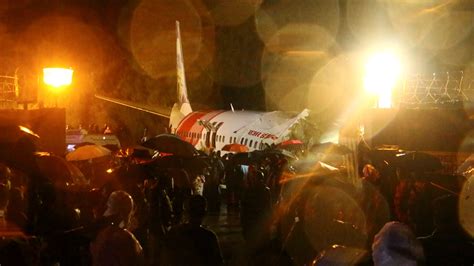
A security camera captured the dramatic take-off and subsequent crash of an Air India flight at Ahmedabad’s Sardar Vallabhbhai Patel International Airport, offering a chilling visual record of the incident that occurred shortly after midnight on Monday. The aircraft, an Airbus A320 operating flight AI-649 from Ahmedabad to Delhi, suffered a tail strike during its ascent, prompting an emergency landing shortly after departure, as confirmed by airline officials.
Air India Flight Makes Emergency Landing After Tail Strike
Ahmedabad – An Air India Airbus A320, flight AI-649 bound for Delhi, was forced to make an emergency landing at Sardar Vallabhbhai Patel International Airport in Ahmedabad shortly after takeoff early Monday morning. The incident, captured on airport security cameras, revealed a tail strike during the plane’s ascent, leading to the swift return of the aircraft and the safe evacuation of all passengers and crew.
The incident occurred at approximately 12:15 AM local time. Shortly after takeoff, the pilots reported an unusual vibration and suspected damage to the aircraft. Following protocol, they immediately ceased climbing and initiated a return to Ahmedabad Airport. Air India officials confirmed the incident, stating, “Air India flight AI-649, operating from Ahmedabad to Delhi, experienced a tail strike during takeoff. The aircraft landed safely back in Ahmedabad, and all passengers and crew were safely evacuated.”
The security camera footage, reviewed by investigators and subsequently released to the public, clearly shows the aircraft’s tail making contact with the runway during the critical take-off phase. Aviation experts note that tail strikes can occur due to a variety of factors including incorrect take-off speed, improper rotation technique by the pilot, miscalculation of weight and balance, or unexpected wind shear. The footage is now a critical component of the ongoing investigation aimed at determining the precise cause of the incident.
“The safety of our passengers and crew is always our top priority,” an Air India spokesperson stated. “We are cooperating fully with the relevant authorities in their investigation to determine the cause of the tail strike. We regret the inconvenience caused to our passengers and are working to provide them with alternative travel arrangements.”
Passengers were immediately disembarked upon landing, and alternative arrangements, including accommodation and rebooked flights, were offered. While no injuries were reported among the 131 passengers and crew members, the incident has triggered a thorough safety review within Air India. The Directorate General of Civil Aviation (DGCA), India’s aviation regulatory body, has launched a formal investigation into the circumstances surrounding the tail strike.
Aviation safety analysts emphasize the potential dangers associated with tail strikes, highlighting the structural damage they can inflict on an aircraft. Depending on the severity of the impact, damage may range from minor cosmetic issues to significant structural compromises, potentially affecting the aircraft’s flightworthiness. In some cases, undetected or improperly repaired tail strike damage can lead to catastrophic failures in subsequent flights.
“Tail strikes are not always immediately apparent, and a thorough inspection is crucial to identify any hidden damage,” explains Captain Rajesh Sharma, a retired commercial pilot with over 30 years of experience. “Modern aircraft are designed with robust structures, but the repeated stress from tail strikes can weaken critical components over time.”
The Airbus A320 involved in the incident has been grounded for a comprehensive inspection and repair assessment. A team of engineers and technicians are conducting non-destructive testing (NDT) to identify any internal damage that may not be visible to the naked eye. This process includes ultrasonic testing, X-ray inspections, and dye penetrant testing to ensure the structural integrity of the aircraft before it is returned to service.
The incident has also raised questions about pilot training and adherence to standard operating procedures (SOPs). Investigators will be examining the pilot’s flight records, simulator training, and adherence to established protocols for take-off and weight distribution. Any deviations from these protocols could provide clues as to the root cause of the tail strike.
Furthermore, the investigation will scrutinize the aircraft’s maintenance history, focusing on any previous incidents or repairs related to the tail section. This review will help determine if any pre-existing conditions may have contributed to the incident. The flight data recorder (FDR) and cockpit voice recorder (CVR) have been recovered and are being analyzed to reconstruct the events leading up to the tail strike. These recorders provide valuable information about the aircraft’s performance, pilot inputs, and communication between the flight crew.
The Air India incident comes at a time when the aviation industry is under increased scrutiny following several high-profile safety incidents worldwide. Regulators and airlines are placing greater emphasis on preventative measures and enhanced safety protocols to minimize the risk of accidents and ensure the well-being of passengers and crew. The findings of the DGCA investigation will likely lead to recommendations for improved training, maintenance practices, and operational procedures within Air India and potentially across the broader aviation industry in India.
The incident serves as a stark reminder of the complexities and potential risks associated with air travel, underscoring the importance of rigorous safety standards and continuous improvement in aviation practices. The traveling public remains vigilant, and the aviation community is committed to learning from each incident to enhance safety and maintain public confidence in air travel. Air India has reaffirmed its commitment to safety and is working diligently to address the issues raised by this incident and prevent future occurrences.
The recovery efforts for passengers affected by the flight disruption are ongoing, with Air India staff providing assistance with rebooking, accommodation, and ground transportation. The airline has also established a dedicated helpline to address passenger inquiries and provide updates on the investigation’s progress. The incident’s impact extends beyond the immediate disruption, affecting future bookings and potentially influencing passenger perceptions of Air India’s safety record. The airline is actively working to restore confidence and demonstrate its unwavering commitment to safety.
The economic impact of the incident, including the cost of aircraft repairs, passenger compensation, and operational disruptions, is expected to be significant. However, the airline’s primary focus remains on ensuring the safety and well-being of its passengers and crew, and addressing the underlying causes of the tail strike. The aviation industry as a whole closely monitors such incidents, as they often provide valuable lessons and opportunities for improving safety standards and operational efficiency. The investigation’s findings will be shared with other airlines and regulatory bodies to promote a culture of continuous improvement and prevent similar incidents from occurring in the future.
The incident has also sparked debate about the adequacy of airport infrastructure, particularly at smaller airports with shorter runways. Aviation experts have called for a review of runway lengths and safety margins at airports across India to ensure they meet the requirements of modern aircraft. This includes assessing the suitability of runways for specific aircraft types and implementing measures to mitigate the risk of tail strikes during take-off and landing.
The Air India tail strike incident underscores the importance of a multi-faceted approach to aviation safety, encompassing pilot training, maintenance practices, operational procedures, and airport infrastructure. Continuous monitoring, rigorous inspections, and proactive risk management are essential for maintaining the highest levels of safety in air travel. The aviation industry remains committed to these principles, striving to ensure the safety and well-being of passengers and crew on every flight.
Frequently Asked Questions (FAQ)
1. What happened to Air India flight AI-649 from Ahmedabad to Delhi?
Air India flight AI-649 experienced a tail strike during takeoff from Ahmedabad’s Sardar Vallabhbhai Patel International Airport. As a result, the pilots made an emergency landing back at Ahmedabad shortly after departure.
2. Was anyone injured in the Air India incident?
Fortunately, no injuries were reported among the 131 passengers and crew members on board the flight. All were safely evacuated after the aircraft landed back in Ahmedabad.
3. What is a tail strike, and why is it dangerous?
A tail strike occurs when the tail of an aircraft makes contact with the runway during takeoff or landing. It can be dangerous because it can cause structural damage to the aircraft. Depending on the severity, this damage can range from minor cosmetic issues to significant compromises that affect the aircraft’s flightworthiness. Undetected or improperly repaired damage can potentially lead to catastrophic failures in subsequent flights.
4. What is being done to investigate the cause of the Air India tail strike?
The Directorate General of Civil Aviation (DGCA), India’s aviation regulatory body, has launched a formal investigation into the incident. This includes:
- Reviewing security camera footage of the takeoff.
- Examining the pilot’s flight records and simulator training.
- Analyzing the aircraft’s maintenance history.
- Recovering and analyzing the flight data recorder (FDR) and cockpit voice recorder (CVR).
- Inspecting the aircraft for structural damage using non-destructive testing (NDT).
5. What measures are being taken to prevent similar incidents from happening in the future?
The investigation’s findings will likely lead to recommendations for improved training, maintenance practices, and operational procedures within Air India and potentially across the broader aviation industry in India. This may include:
- Enhanced pilot training on takeoff procedures and weight distribution.
- More rigorous aircraft inspections and maintenance protocols.
- Reviewing runway lengths and safety margins at airports.
- Implementing measures to mitigate the risk of tail strikes during takeoff and landing.
Expanded Analysis and Contextual Information
The Air India flight AI-649 tail strike incident highlights several critical aspects of aviation safety and the broader operational challenges faced by airlines. This section delves deeper into these areas, providing additional context and analysis.
Understanding Tail Strikes: Causes and Consequences
Tail strikes, though not always catastrophic, represent a significant safety concern in aviation. They occur when the rear of the fuselage makes contact with the runway surface, typically during the takeoff or landing phases. The factors contributing to tail strikes are diverse and often interconnected:
-
Pilot Error: Incorrect rotation technique during takeoff is a primary cause. Over-rotating the aircraft—lifting the nose too high too quickly—can lead to the tail scraping the runway. This can be exacerbated by fatigue or inadequate training. Similarly, during landing, improper flare techniques (raising the nose slightly before touchdown) can also result in a tail strike.
-
Aircraft Weight and Balance: Incorrect weight distribution within the aircraft can significantly alter its center of gravity. If the center of gravity is too far aft (towards the tail), the aircraft will be more prone to tail strikes during rotation and landing. Careful calculation of passenger and cargo weight, along with proper loading procedures, is crucial.
-
Takeoff and Landing Speed: Insufficient takeoff speed, often due to miscalculation or inadequate thrust, can force pilots to rotate the aircraft more aggressively, increasing the risk of a tail strike. Similarly, landing at too low a speed can cause a hard landing and potential tail contact.
-
Runway Conditions and Length: Short runways or contaminated runway surfaces (e.g., wet, snowy, or icy) can increase the takeoff distance required, forcing pilots to use more aggressive rotation techniques. Crosswinds and wind shear can also complicate takeoff and landing, increasing the likelihood of a tail strike.
-
Aircraft Configuration: The aircraft’s flap settings during takeoff and landing play a crucial role in lift generation. Incorrect flap settings can affect the aircraft’s takeoff and landing performance, potentially contributing to a tail strike.
The consequences of a tail strike can vary widely depending on the severity of the impact. Minor strikes may result in superficial damage to the tail skid, while more severe strikes can cause structural damage to the fuselage, empennage (tail assembly), and even control surfaces. Such damage can compromise the aircraft’s aerodynamic performance and structural integrity, posing a significant safety risk.
The Role of Technology and Inspection
Modern aircraft are equipped with advanced systems and technologies designed to prevent tail strikes and mitigate their consequences. These include:
-
Takeoff Performance Monitoring Systems (TPMS): These systems continuously monitor the aircraft’s takeoff performance, providing pilots with real-time data on airspeed, acceleration, and runway distance remaining. TPMS can alert pilots to potential problems, allowing them to abort the takeoff if necessary.
-
Enhanced Ground Proximity Warning Systems (EGPWS): While primarily designed to prevent controlled flight into terrain (CFIT), EGPWS can also provide warnings of excessive sink rates during landing, helping pilots to avoid tail strikes.
-
Flight Data Recorders (FDR) and Cockpit Voice Recorders (CVR): These “black boxes” record critical flight parameters and cockpit audio, providing valuable data for investigating accidents and incidents, including tail strikes.
Following a tail strike, a thorough inspection of the aircraft is essential to assess the extent of the damage. This typically involves:
-
Visual Inspection: A detailed visual inspection of the tail section, looking for any signs of damage, such as dents, scratches, or cracks.
-
Non-Destructive Testing (NDT): NDT techniques, such as ultrasonic testing, X-ray inspections, and dye penetrant testing, are used to detect internal damage that may not be visible to the naked eye.
-
Structural Analysis: Engineers perform structural analysis to assess the impact of the damage on the aircraft’s structural integrity and determine the necessary repairs.
The Importance of Pilot Training and Standard Operating Procedures
Effective pilot training and adherence to standard operating procedures (SOPs) are paramount in preventing tail strikes. Pilots must be thoroughly trained in:
-
Proper Rotation Techniques: Mastering the correct rotation technique during takeoff is crucial to avoid over-rotation and tail strikes.
-
Weight and Balance Calculations: Pilots must be proficient in calculating the aircraft’s weight and balance and ensuring that it is within acceptable limits.
-
Takeoff and Landing Performance Calculations: Pilots must be able to accurately calculate takeoff and landing distances based on runway conditions, wind, and aircraft weight.
-
Recognition and Response to Wind Shear: Pilots must be trained to recognize and respond to wind shear, which can significantly affect takeoff and landing performance.
Airlines must also have well-defined SOPs for takeoff and landing, which pilots must strictly adhere to. These SOPs should cover all aspects of flight operations, including weight and balance calculations, takeoff and landing performance calculations, and response to abnormal situations.
Regulatory Oversight and Safety Standards
Aviation regulatory bodies, such as the DGCA in India and the Federal Aviation Administration (FAA) in the United States, play a crucial role in ensuring aviation safety. These bodies set and enforce safety standards, conduct audits of airlines and airports, and investigate accidents and incidents.
Following a tail strike incident, the regulatory body will typically launch an investigation to determine the cause of the incident and identify any contributing factors. The investigation may involve:
- Reviewing the pilot’s training records and flight experience.
- Examining the aircraft’s maintenance history.
- Analyzing the flight data recorder and cockpit voice recorder.
- Conducting interviews with the flight crew and other relevant personnel.
Based on the findings of the investigation, the regulatory body may issue recommendations for improved training, maintenance practices, or operational procedures. These recommendations are intended to prevent similar incidents from occurring in the future.
The Impact on Air India and the Aviation Industry
The Air India tail strike incident has several implications for the airline and the broader aviation industry:
-
Reputational Damage: The incident can damage Air India’s reputation and erode passenger confidence. The airline will need to take steps to reassure the public that it is committed to safety.
-
Financial Costs: The incident will incur financial costs for Air India, including the cost of aircraft repairs, passenger compensation, and operational disruptions.
-
Increased Scrutiny: Air India will face increased scrutiny from regulators and the public, which may lead to more frequent audits and inspections.
-
Industry-Wide Learning: The incident provides an opportunity for the aviation industry to learn from Air India’s experience and improve safety standards and operational procedures.
Airport Infrastructure and Runway Safety
The incident also raises questions about airport infrastructure and runway safety, particularly at smaller airports with shorter runways. Factors to consider include:
-
Runway Length and Width: Ensuring that runways are of adequate length and width to accommodate the aircraft that operate at the airport.
-
Runway Surface Conditions: Maintaining runway surfaces in good condition, free of contaminants such as water, snow, or ice.
-
Runway Lighting and Markings: Ensuring that runway lighting and markings are adequate for nighttime and low-visibility operations.
-
Obstacle Clearance: Maintaining adequate obstacle clearance around runways to prevent collisions.
A comprehensive review of airport infrastructure and runway safety is essential to identify and address any potential hazards that could contribute to accidents and incidents.
Conclusion
The Air India flight AI-649 tail strike incident serves as a stark reminder of the complexities and potential risks associated with air travel. While no one was injured in this particular incident, it underscores the importance of rigorous safety standards, continuous improvement in aviation practices, and a multi-faceted approach to aviation safety encompassing pilot training, maintenance practices, operational procedures, and airport infrastructure. The investigation’s findings and subsequent actions will be critical in preventing similar incidents from occurring in the future and maintaining public confidence in air travel. The aviation industry must remain vigilant and committed to learning from each incident, striving to ensure the safety and well-being of passengers and crew on every flight. The swift response and ongoing investigation demonstrate a commitment to safety, but continuous vigilance and proactive measures are essential to prevent future incidents.
